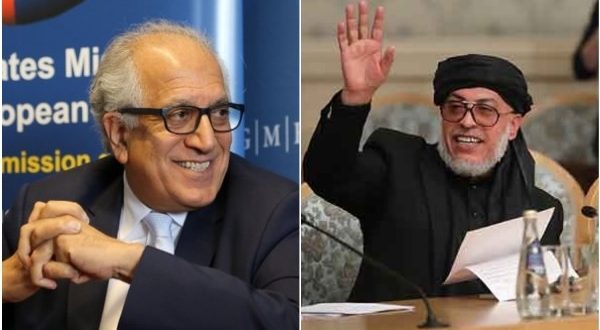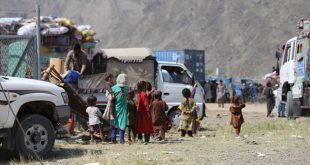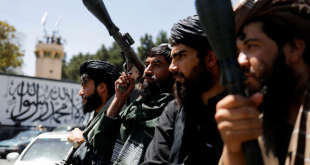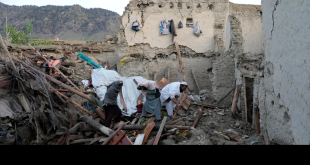Doha peace talks between the US and the Taliban have progressed but still one should agree with Amb. Zalmay Khalilzad, that ‘nothing is agreed till everything is agreed’. Afghans’ recent conflicts goes back to the last 18 years but the sociology of the conflict goes further, at least since Soviet occupation in December 1979. Afghanistan was never directly colonized in the era of modern colonialism. All previous historical attempts failed. The successive efforts by British Empire in 19th century led to establishing Afghanistan as buffer zone between British and Russian empires after defining its northern and eastern boundaries through Afghan Boundary with Russia Agreement 1873 and Durand Line Agreement 1893, respectively.
While discussing with Upendra Baghel, a researcher on Afghanistan and regional security, he expresses that a sustainable peace agreement should be a comprehensive agreement, covering all aspects of the conflict not limiting to only four elements: counterterrorism, troop withdrawal, intra-Afghan dialogue and ceasefire. Like any other conflict, the roots of the Afghan conflict are in the history of the region, social, cultural and religious relationships and politics. The founding father of the People’s Republic of China, Mao Zedong says, ‘politics is war without bloodshed while war is politics with bloodshed’ and so, the political settlement should aim to develop capacity to manage conflicts allowing the societies to remain in mutual harmony and coexistence. Again, following the longest serving US President Franklin D. Roosevelt, ‘in politics, nothing happens by accident. If it happens, you can bet it was planned that way’, the peace agreement should be well planned and structured. The agreement should envision Paul Wellstone, ‘politics is about the improvement of people’s lives. It’s about advancing the cause of peace and justice…’
The agreements need to be supported with strong political will locally, regionally and internationally, sufficient uninterrupted resources to implement the agreements and robust mechanism of monitoring and accountability. It is not the agreement itself but its ingredients, flexibility and implementations are more important otherwise the initial euphoria withers down with the passage of time and political and military maneuverings resurface.
Going into retrospect, Upendra said that one can find examples of many failed agreements rather than successful agreements for long drawn conflicts. The agreements continue to fail to deliver and such failures result into either human catastrophe or reemergence and renewed conflicts. In case of Afghanistan, there is conflict fatigue and all parties want peace but need guidance to follow same path.
Arusha Peace Agreement signed on 4th August 1993, could not prevent the human apocalypse, genocide in Rwanda. In spite of UN peacekeeping mission with blue helmets on ground, the situations slide into the political and military maneuvers and instability leading to genocide taking almost 1 million lives in a period of 100 days in 1994. Arusha Agreement was comprehensive with power sharing, transitional arrangements/ institutions, ceasefire, integration of forces, refugee repatriation and resettlement, but it could not deliver as it was intended. Genocide was triggered after the Presidential plane crashed on 6th April 1994, the reasons of which were never investigated through any independent mechanism Hutu dominated government started killing the minority ‘Tutsi’ and the others considered as ‘liberal’. The government mobilized all resources at their disposal, including armed militia and government policies such as civil defense program to provide security and continue frenzy of killing. Rwandese Patriotic Front (RPF), which was the other party in the Agreement, with the Government of the Republic of Rwanda advanced from its positions and took over the capital, Kigali on July 4, 1994. After few weeks, RPF announced the new government again following the same Arusha principles, but without the members of the displaced Government who were part of the genocide.
A treaty ‘Lusaka Protocol’ was signed in November 1994 to end the Angolan Civil War, which started in 1975 when Angola became independent. It was signed between the People’s Movement for the Liberation of Angola (MPLA) Government and National Union for the Total Independence of Angola (UNITA). Treaty also covered all the aspects of political settlement. Pursuant to the treaty, United Nations peacekeeping mission was set up with troops. The treaty could not realize peace and in December 1998, MPLA Government rejected the Lusaka Protocol, asked the UN mission to leave, which withdrew all its personnel in February 1999 and then the MPLA Government resumed full fledge military onslaught on UNITA.
The very successful agreement was the Dayton, signed on 14 December 1995. The agreement stabilized the Balkan region. It is the successful model of the agreement and its implementation. The agreement was the product of intense negotiations of 21 days, 1 – 21 November 1995, at the Air Force Base near Dayton, Ohio, US, where main participants from the region included the President of the Republic of Serbia, President of Croatia and President of Bosnia & Herzegovina. The place of negotiation was carefully chosen to remove all the parties, primarily three Heads of States, from their comfort zones and to reduce their ability to negotiate through leaks to the media. The leading negotiator Richard Holbrooke was a visionary in his approach and understood the whole spectrum of complexities including regional and Serbian and Bosniac ethnic dynamics. The agreement also covered regional stabilization, human rights, police, civilian implementation and cultural heritage in addition to military aspects, constitution, election and refugees.
For the first time, any agreement recognized the contentious issues such as, boundary lines between two entities and arbitration provisions. It engaged regional and international actors. The implementation was supported with the strong arm of NATO, expertise of civilian institutions of European Union and robust mandate of UN. It is referred as ‘the most impressive example of conflict resolution’ and it allowed the region to stabilize transitioning incrementally from one phase to other of the peace process, which included state building.
Afghanistan situation is more complex than all the above three cases. Long drawn conflict with the presence of political and military maneuverings, violent extremism and terrorism including Al Qaida and IS-KP, religion-political insurgency and illicit economy makes it as one of the most complex to negotiate.
Upendra further said that Amb. Khalilzad may keep these in mind and then develop Doha talks taking into considerations implementation aspects. He may find certain interlocutors difficult to negotiate which Holbrooke also found. He had already proved himself by getting the Taliban to the table. He led substantive negotiations with the Taliban for 16 days in February 2019. The US expressed full support to him and admonished any attempt to erode his authority by calling the Afghan National Security Advisor and objecting to his uncalled for remarks. Conflict resolution having many facets is a serious process, engaging whole of systems and in the absence of those the efforts are bound to fail. Upendra feels strongly that Amb. Khalilzad needs to develop strong, robust and functional monitoring, verification and accountability mechanisms, more robust than Dayton. People of Afghanistan have high hopes in talks and would like Doha talks becoming the Dayton for Afghanistan advancing the cause of peace and justice.
The writer is Mohammed Gul SAHIBBZADA; He is Chief Executive Officer (CEO)
Kainaat Group of Companies (KGC).
 Afghanistan Times
Afghanistan Times




